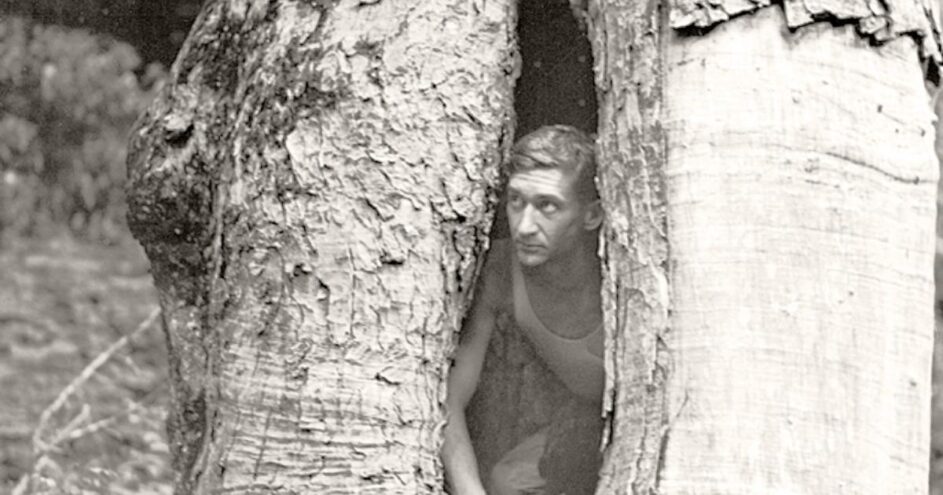It probably started with a view from his window in his family’s downtown homes, first on East Clinch Avenue, then on Hill Avenue. Out there, 40 miles south of the city, he could see the blue mist of the Smoky Mountains. Later, at the age of 15, he went on a backcountry trip with his father to Gregory’s Bald. The die was cast, and a renowned wilderness preservationist was born.
He was Harvey Benjamin Broome, son of an English immigrant and a Fountain City girl. Through his mother he was descended from the father of Fountain City, John Adair. Born in 1902, Broome held fond memories of traveling to his grandfather John Harvey Smith’s farm on North Broadway via the old “Dummy line” railroad. In this week that we celebrate Earth Day, it seems an appropriate time to remember a home-grown hero of the conservation movement who made an impact on a national scale.
Broome graduated from Knoxville High School in 1919, the University of Tennessee in 1923, then from Harvard Law in 1926. He reportedly modestly told people he “graduated from a law school in the east.” His career began as a clerk, eventually making it back home by 1930 to clerk for U.S. Circuit Court Judge Xenophon Hicks (who makes an appearance in this story).
He was lucky enough to be too young for Word War I and pushing 40 by the time the U.S. entered World War II. He went into private law practice in Oak Ridge in 1949, but less than a decade later returned to clerking for U.S. District Court Judge Robert L. Taylor. His reason was quite simple: those private law hours took away entirely too much of his time in the great outdoors. That passion was shared by his wife, Anne Pursel, whom he married in 1937.
You have to put your mind’s eye in the Smoky Mountains of over a century ago to imagine what Broome saw in the years before the creation of the national park. For one, it took a lot more work to get to something that resembled a trail head for Gregory’s Bald, the Chimney Tops, Mount LeConte or Charlie’s Bunion. The trails were not maintained to even half the degree they are today. And getting to them mostly involved, at best, dirt or gravel roads. By the time President Franklin Roosevelt dedicated the park in 1940, U.S. 441 was still under construction from Newfound Gap to Cherokee, North Carolina. When the park was created in 1934, huge swaths of forest had been clear cut with no effort at restoration.
That continued destruction was exactly what Broome wanted to save his beloved mountains from. He was a founding member and long-time president of the Smoky Mountain Hiking Club. Though he advocated for the creation of the park, his goals were far more about preserving wilderness for its own sake versus any concerns over tourism and development along its outskirts. In the mid-1930s he was director of the Great Smoky Mountains Conservation Association and became a founding member of the Wilderness Society, which he served as president for over a decade. His crowning achievement was his work getting Congress to pass the Wilderness Act in 1964.
Harvey and Anne built a home on his grandfather’s farm in Fountain City and owned a cabin in Emert’s Cove in Sevier County. By 1960, further development on Broadway would force them off that land, so he had the house moved up to Mountain Crest Drive where he had marvelous views of the Smokies. He died at his home in 1968 while building a wren house from a hollowed-out log. The home is still there.
Broome also served as president of the East Tennessee Historical Society in the mid-1940s. He left his papers to the McClung Historical Collection.
“Civilization has provided no peace, no spectacle, no assurance to the human heart which can transcend the simple, ever-changing, matchless beauty and peace of the natural world.” Harvey Broome: Out Under the Sky of the Great Smokies
Beth Kinnane writes a history feature for KnoxTNToday.com. It’s published each Tuesday and is one of our best-read features.
Sources: Fountain City: People Who Made a Difference by Dr. Jim Tumblin; Out Under the Sky of the Great Smokies and Earth Man by Harvey Broome

